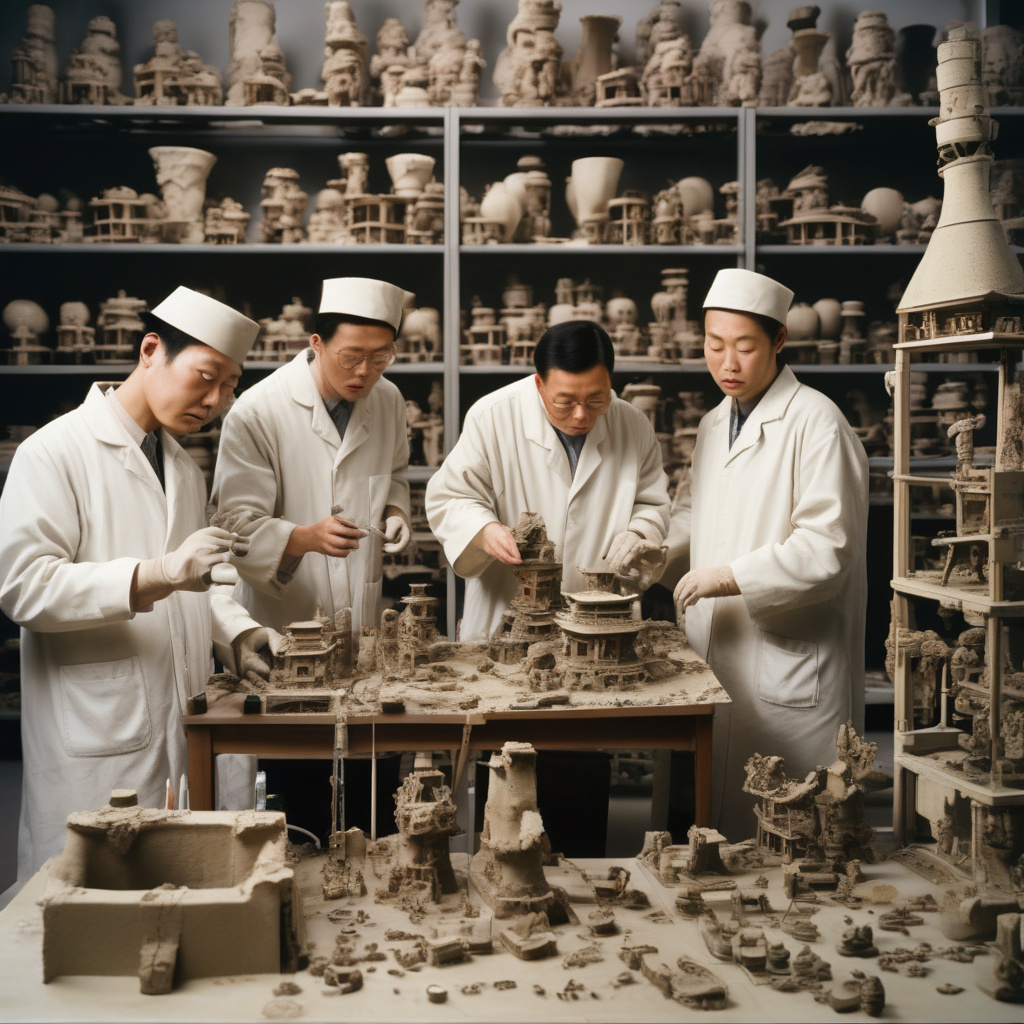Resurrecting Ancient Wisdom: China’s Researchers to Revive 2,000-Year-Old Earthquake Sensor
Chinese scientists are exploring the possibility of recreating a modern, more sophisticated version of an earthquake-detecting device with roots dating back over two millennia. This initiative aims to revive an ancient seismic technology that could potentially revolutionize current earthquake monitoring systems.
The ancient earthquake sensor, known as the “Dragon Jar,” was originally designed during the Eastern Han Dynasty (25-220 AD). Legend has it that the Dragon Jar had the ability to detect the direction of an earthquake hundreds of miles away, offering crucial early warnings to the people in the region. The device was crafted from a bronze vessel adorned with eight dragon-shaped ornaments, each pointing towards a different cardinal direction. When an earthquake occurred, a mechanism inside the jar would release a ball from the dragon’s mouth, indicating the quake’s origin.
While the Dragon Jar’s effectiveness may have been dismissed as folklore by some, recent archaeological findings have uncovered multiple instances where the device accurately predicted seismic activities. This has sparked the interest of Chinese researchers to delve deeper into the ancient technology and potentially adapt it to modern-day standards.
By combining historical records, archaeological evidence, and modern scientific knowledge, researchers aim to unlock the secrets behind the Dragon Jar’s earthquake detection capabilities. Through advanced materials, sensor technologies, and data analytics, a new and improved version of the ancient device could be developed to enhance earthquake early warning systems.
The utilization of the Dragon Jar’s principles in contemporary seismic research showcases the importance of blending traditional wisdom with cutting-edge innovations. By harnessing the knowledge of the past, scientists can gain valuable insights that may lead to groundbreaking discoveries in earthquake prediction and disaster mitigation.
Furthermore, the resurrection of the 2,000-year-old earthquake sensor highlights China’s commitment to preserving its cultural heritage while driving advancements in scientific research. This interdisciplinary approach not only bridges the gap between ancient practices and modern technology but also sheds light on the ingenuity of our ancestors in developing sophisticated instruments ahead of their time.
As China’s researchers continue to unravel the mysteries surrounding the Dragon Jar, the potential implications for earthquake monitoring and early warning systems are substantial. By tapping into the wisdom of the past, we can pave the way for a safer and more resilient future in the face of natural disasters.
In conclusion, the journey to resurrect the 2,000-year-old earthquake sensor exemplifies the intersection of history, science, and innovation. Through this ambitious endeavor, Chinese scientists are not only reviving a legendary device but also paving the way for a new era of seismic technology that honors the legacy of the past while shaping the advancements of tomorrow.
#China, #EarthquakeSensor, #AncientTechnology, #SeismicResearch, #CulturalHeritage












